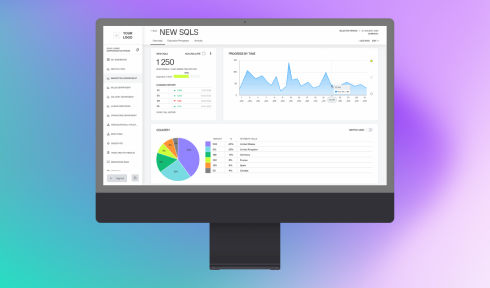They say business is just like gambling. You never know what to bet on, but when you win, you pretend to know the game from the very start. The most outstanding top managers and enterprise owners that you see on the cover of Forbes, Fortune, Wired, etc. often look like overly confident, all-knowing, and mature business players. But in reality, they are like everybody else: hesitant, uncertain, and perplexed, especially when it comes to making the right decisions in a very short time.
So, how do they manage to keep their companies on top? The answer lies in their ability to detect and resolve problems in a timely manner. In this article, we will consider different approaches to decision making in business that allows business-related people struggling with complex and controversial issues to find sensible solutions.
Simon’s Model of Decision-Making
Simon’s model of decision-Making lies at the heart of Computools’s solutions and preferably used by in-house experts at all levels. Herber Simon was a Nobel-Prize winning economist who proposed a three-level decision-making model to apply to puzzling problems in the managerial context. Even now, Simon’s problem-solving approach remains relevant and applicable to different business problems regardless of the area of activity. His model is made up of three stages, each of which helps a person in trouble figure out a workable solution to alleviate the burdening situation, they are as follows:
1. Intelligence Phase
The decision-making process starts with identifying problems. When you detect a problem, the need for a solution becomes apparent and explicit. The intelligence phase implies the collection of essential information that might be of use in decision-making.
– Problem identification. Most people detect the problem when they are experiencing some form of inconvenience arising from the misalignment between their expectations and reality. Problem identification is frequently viewed as the first step to problem-solving as the recognition of the problem denotes people’s readiness to commit themselves in search of a solution.
– Problem formulation. When the problem is acknowledged, it is necessary to define and specify it in detail. It is necessary to realize where the root of evil lies; otherwise, there is a risk of getting focused on the wrong thing.
– Goal-setting. The problem is always indicative of a weak point in your business structure that necessitates an improvement. So you should define the conditions and requirements that your solution must comply with. A clear understanding of what is most affected by your problem will give you the right ground on which you can elaborate your criteria.
Related Experience

2. Design Phase
Design is a stage of producing possible solutions to address your problem, and you will need to choose from many options. Finding one or two relevant solutions does not promise either is a match to your business case. You might need a number of brainstorming techniques to approach your problem from different perspectives. It is vital to identify both positive and negative implications of every business decision so that later you may compare them to eventually discover the one that fits every requirement that you’ve set forth.
3. Choice Phase
– Assessment of options. The best solution is rarely one that meets the eye. When it is about a business decision, your sixth sense is generally a bad advisor. Your best tool here is modern analysis that will let you see the genuine value of every idea that seems good at first glance. In brief, your task is to compare all possible solutions you have generated before, based on the requirements and/or other constraints imposed by your business environment.
– Making a Decision. It is the final step of decision making that is usually within the CEO’s power. The top manager has the final say. This is why at the end of every decision-making process, the CEO is expected to decide which direction the company is heading.
Circular Decision-Making Model

Additional Decision-Making Techniques
The decision-making model is only a framework from which you may choose to come up with the most appropriate solution to address your business needs. Beyond this, you can rely on different decision-making techniques at different stages of the decision-making process, which will allow you to analyze possible scenarios and obtain more qualitative results.
1. Cause-and-effect diagram (fishbone)
A cause-and-effect diagram, also called ‘fishbone’ is a visual tool intended to explore possible causes of a specific problem by representing them in a structured and logical way. This technique is an essential attribute of the root cause analysis that is widely used in business departments involved with analytics, prediction, and risk management. Before organizing information, you have to think about the reasons and factors that might have led to the business situation in which you are stuck. Then you should group the factors by their nature and establish causal relations that exist between them, forming a fishbone of causality.
Cause-and-effect diagram

2. Decision tree
Unlike a cause-and-effect diagram, decision trees are focused on the analysis of possible solutions. It allows you to see possible options and alternatives to the course of action you are currently committed to. Basically, each branch of the decision tree gives you two options that often appear to be opposite to each other. You continue to expand the decision tree until your problem is covered from every angle.
Decision tree

3. Decision matrix and lists
Decision matrices seem the most complicated out of these three techniques, but its advantage is that you can see the most beneficial solution that outperforms its alternatives by all relevant criteria. These visual assessment tools are best used when you have to compare two similar options and the decision must be made quickly.
Decision matrix

For further information
The ability to make a smart decision often lies at the core of successful projects. When you have to choose between two or more alternatives, it is important to know that you are guided by the right criteria, especially when it comes to software development services. If you are looking for a modern method of getting your custom enterprise software well designed, message Computools’s team via info@computool.com for a consultation on the best digital solution for your business.

Computools
Software Solutions
Computools is a digital consulting and software development company that delivers innovative solutions to help businesses unlock tomorrow.









“Computools was selected through an RFP process. They were shortlisted and selected from between 5 other suppliers. Computools has worked thoroughly and timely to solve all security issues and launch as agreed. Their expertise is impressive.”